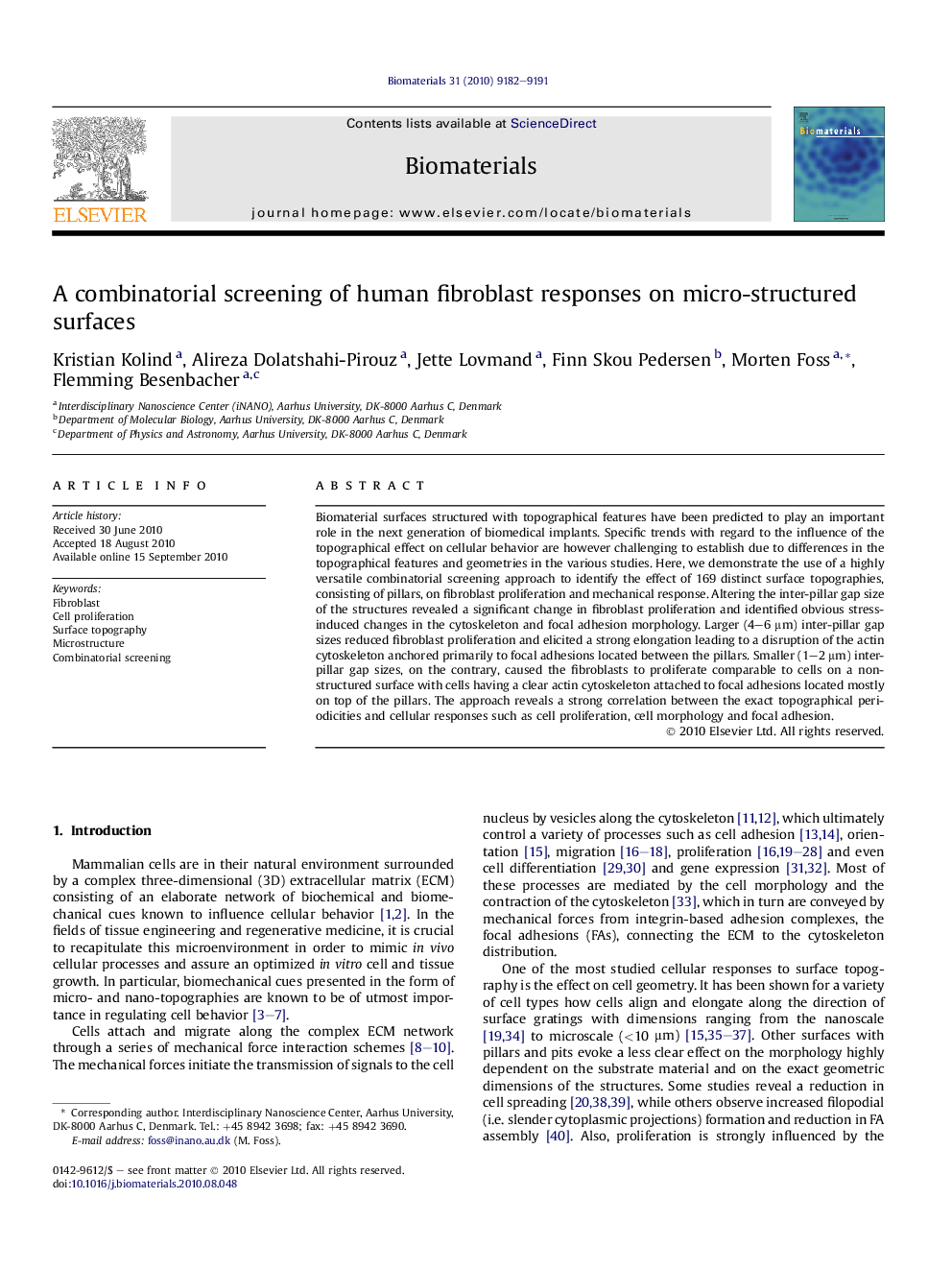| Article ID | Journal | Published Year | Pages | File Type |
|---|---|---|---|---|
| 8537 | Biomaterials | 2010 | 10 Pages |
Biomaterial surfaces structured with topographical features have been predicted to play an important role in the next generation of biomedical implants. Specific trends with regard to the influence of the topographical effect on cellular behavior are however challenging to establish due to differences in the topographical features and geometries in the various studies. Here, we demonstrate the use of a highly versatile combinatorial screening approach to identify the effect of 169 distinct surface topographies, consisting of pillars, on fibroblast proliferation and mechanical response. Altering the inter-pillar gap size of the structures revealed a significant change in fibroblast proliferation and identified obvious stress-induced changes in the cytoskeleton and focal adhesion morphology. Larger (4–6 μm) inter-pillar gap sizes reduced fibroblast proliferation and elicited a strong elongation leading to a disruption of the actin cytoskeleton anchored primarily to focal adhesions located between the pillars. Smaller (1–2 μm) inter-pillar gap sizes, on the contrary, caused the fibroblasts to proliferate comparable to cells on a non-structured surface with cells having a clear actin cytoskeleton attached to focal adhesions located mostly on top of the pillars. The approach reveals a strong correlation between the exact topographical periodicities and cellular responses such as cell proliferation, cell morphology and focal adhesion.
